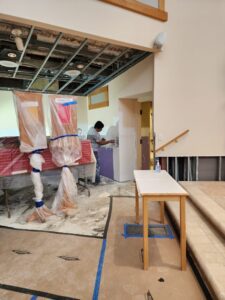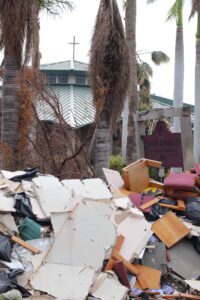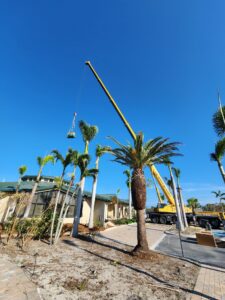When students returned to Diocesan Catholic schools the week of Aug. 7, 2023, school administrators were in a last-minute rush to complete summer improvement projects which ranged from a fresh coat of paint, the installation of portable classrooms, to new roofs.
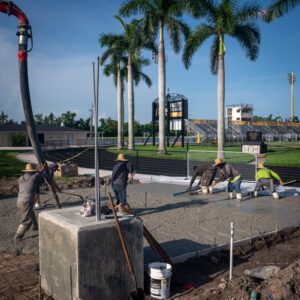
The work across the Diocese took advantage of students being off campus as crews with heavy equipment conducted loud and dusty work. The work is expected to continue in some locations right up to and beyond the first day of school, which was Aug. 9.
At Bishop Verot Catholic High School in Fort Myers, crews have been working at various locations across the campus. Work included the installation of six new portable classrooms behind the theater to accommodate the growing number of students as well as other cosmetic upgrades throughout. Meanwhile, the finishing touches are being put on a new entrance to Viking Stadium. In its final phase in mid-August, the new plaza is being dedicated to Coach Mike Gill, who has been a teacher at Verot for more than 50 years. The work is expected to be completed by the first kickoff of the coming football season in late August.
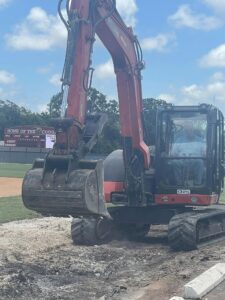
Workers also descended on Cardinal Mooney Catholic High School in Sarasota, throughout the summer. One building received a new roof, while there was new paint in the hallways and bathrooms, updates to the gymnasium roof and major renovations to the baseball field. Unexpected repair work was needed due to a mid-summer thunderstorm, which caused damage to the roof of the media center and a covered walkway, but that work was completed by the first day.
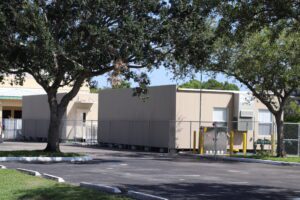
There have been several upgrades at St. Elizabeth Seton Catholic School in Naples. Work included installing two new modular classrooms to handle increased enrollment, new middle school lockers, an audio/visual system in the gymnasium, renovated restrooms in the cafeteria, smart boards, shiny floors, and much more.
Four additional classrooms were added to Donahue Academy of Ave Maria Catholic School in Ave Maria. These rooms had been used for various purposes, such as storage and other school activities, but the need for the class space became pressing as there has been a massive increase in enrollment in the past few years.
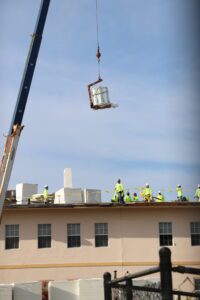
A new covered basketball court is being installed at St. Joseph Catholic School in Bradenton. This court is nearing completion as the finishing touches are added. The covered area will allow more outdoor activities for students, including sports such as tennis and pickleball.
For Epiphany Cathedral Catholic School, much of the work focused on completing roof repairs from Hurricane Ian. The main school building was temporarily unusable following the Sept. 28, 2022, storm. Temporary repairs to the interior building and roof allowed students to return to the building by early January 2023, but the installation of the new permanent metal roof took most of the summer. St. Ann Catholic School in Naples also received a new roof in an upgrade to protect from future storms.
All ongoing work is expected to be completed soon, putting the 15 Diocesan Catholic schools in good shape for the more than 6,200 in the classrooms this year!






